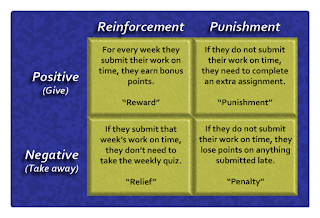The good news is almost all of the online students thought their online learning experience was as good as (48%) if not better than (37%) similar college classroom learning experiences. Roughly the same percentages thought that the lifetime value of their online program equaled (54%) or exceeded (32%) its cost. Students see the value and efficacy on online learning.
The survey asked the students to rate various online learning activities according to how helpful they were to their learning or success in the course or program.
The number one activity according to students? Videos created by their instructor. These could be any type of video that has an instructor presence. I have talked in the past about several different types of videos, from preplanned course introduction videos or narrated PowerPoints saved as videos, to quick, simple videos to explain something that comes up during the semester. Clearly students appreciate the educational value of these videos, even more so than other videos, like those provided by publishers or that you might find on YouTube. 58% of students found instructor-created videos very helpful, while only 37% found third-party videos helpful.
I also found it interesting that students found instructor-created videos more helpful than the textbook. Again, while the textbook is a good resource, there is power in visual learning. Narrated videos make use of dual channel encoding, where information learned with both verbal and visual cues, making learning more meaningful and enhances later recall of information.
While the survey didn't ask why students found these activities helpful, if you think about it, it only make sense. You are the content expert; that is why you teach a course. You don't go into a classroom and teach by having students read a textbook and watch videos someone else made. You put your own spin on the content when you lecture in the classroom, so you should do that online, too. Students clearly see value in it.
Another thing I found interesting was students found more learning value in written assignments than in quizzes - not much, but a little. Again, we can only speculate why, but I can think of a couple of reasons. One might be that students see value in the more complex, higher order thinking skills required of most written assignments. While it is possible to assess those skills with multiple choice questions, it is much easier to assess the lower level skills of knowledge, comprehension, and application. Publisher test banks will tend to use those lower level questions that are easier to write.
Another reason might be the availability of publisher test banks themselves. If they are available to faculty, someone will put them online for students to "study," and once they are online, anyone can find them. A recent study suggested that nearly half of students use publisher test banks, either to practice the course content or, more frequently, to memorize the responses. This is a problem in both online and classroom courses, and students know it. So the ones who don't cheat may find little value in quizzes they know their classmates cheat on, and the ones who do cheat, realize they aren't learning from those activities.
NOTE: When I got my Master's degree, all graduate students in the College of Education had to take EdPsy 400, an introductory statistics course. This was in the early 80's, so it was pre-Internet, but the instructor did put past tests on reserve in the library so students could practice working the problems. The number of TEACHERS who just chose to memorize the answers on all of the tests rather than use them as they were intended astounded me. If their students did the same thing, they would accuse them of cheating...and if they had spent the time they spent memorizing a couple hundred answers actually learning statistics, well....
Although not rated as high as other activities, the majority of students do find discussions to be at least somewhat helpful. this is important, because students who are engaged in their learning tend to be more successful in their learning with higher retention and completion rates.
To increase the effectiveness of discussions, you need to understand the different reasons for having discussions. Discussions help learners use those higher order thinking skills I keep going on about. When the instructor participates in the discussion, students feel more connected to the course and may become more engaged in their learning - you show interest in their learning, and they will show interest in their learning. As with all online learning activities, it takes some effort to design effective discussions, but student do view them as valuable when done well.
The final bit I found interesting in this survey is the number of students who complete their course work on mobile devices, either cell phones or tablets. 20% said they completed all course related activities on a mobile device, while another 47% said they completed at least some of their activities online. That means 2/3 of online students completed at least some of their online coursework using a mobile device. Reading course material and communicating with their instructor or other students were the top activities completed on mobile devices, with completing research and assignments next. Viewing required lectures was the activity completed the least on mobile devices, but there is no information on how many of their courses actually have required online lectures.
What's interesting about these numbers is how little they have changed over the last two years. The same survey was conducted in 2016 and 2017, but the distribution of students who use mobile technology has not changed much. However, it is still high enough that mobile device usage should be considered in at least the most popular activities. For example, I use ebooks in my classes that can be read on a mobile device, and I use Blackboard Learn for all written assignments, quizzes and discussions, since I know it is mobile compatible; publisher LMSs may not be. Although students may not CHOOSE to use mobile devices when completing their courses, you never know when they may be stuck at a doctor's office with a sick child or called out of town on a business trip at the last minute. Making sure they have the OPTION to complete work "on the go" is important.
The report also covers other interesting topics, like how online students can be recruited and what services they need. I suggest everyone take a few minutes and look it over, so you can make sure you are meeting the needs of your online students.




























